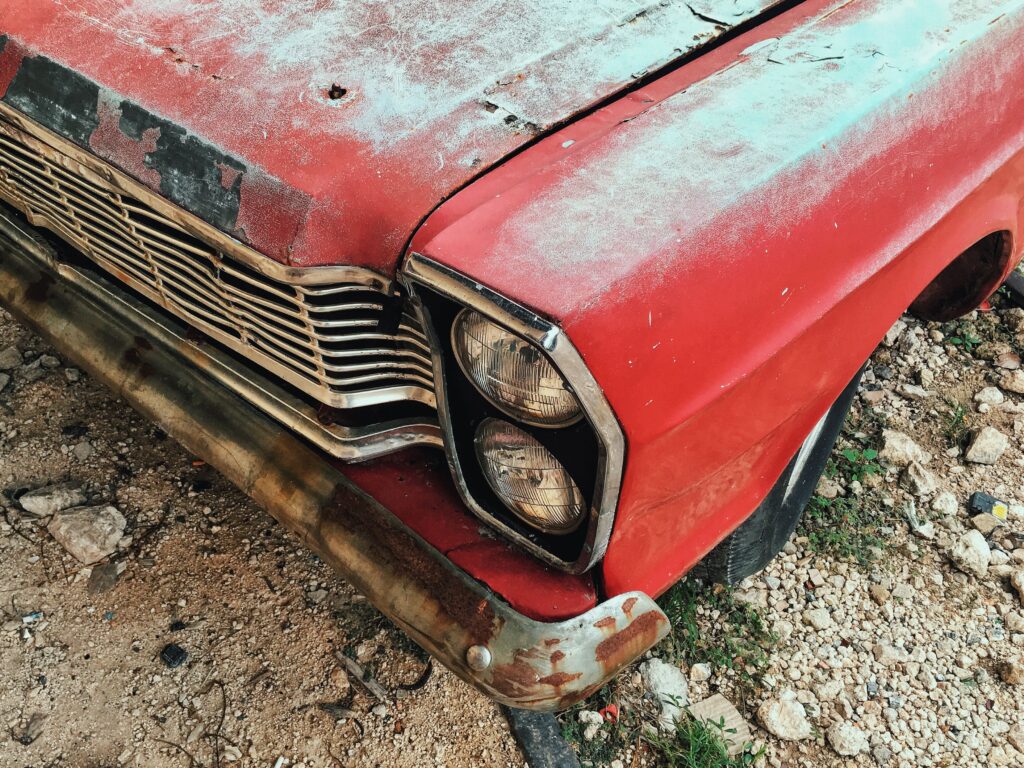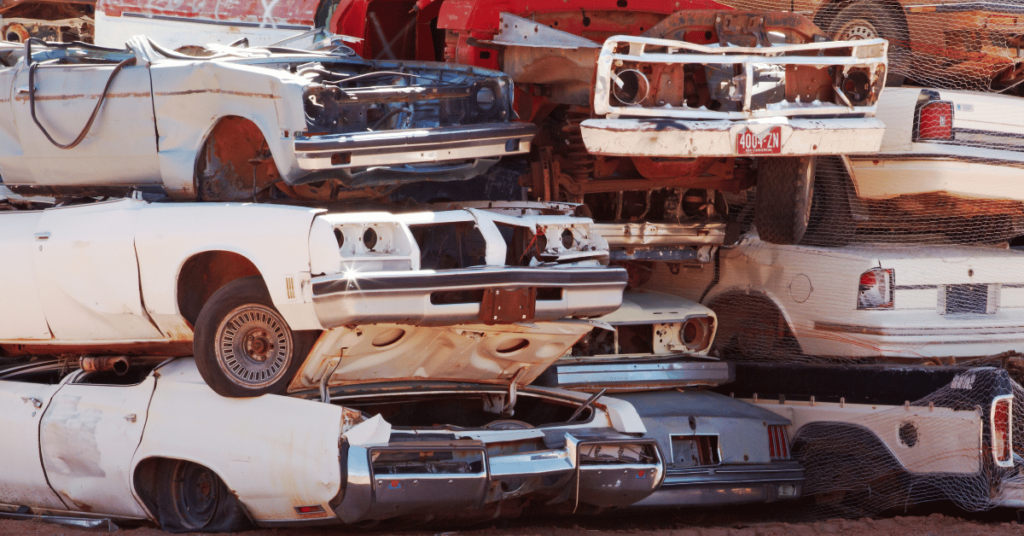New Zealand’s used car market is estimated at US$306.40 million and is expected to grow at a CAGR of 6% between 2025 and 2030. Safe to say, it’s fairly competitive, so you’ll need all hands on deck to make your offer appealing.
Allow us to provide you with the guidance you need.
First Things First, Choose the Right Selling Method
How do you plan to sell your old car?
This will depend on what constitutes old in your dictionary. Is it a car showing wear and tear or one that’s ‘comparatively older’ to newer models on the market?
Here are the options available to you:
Online Marketplaces
From car-selling platforms like Trade Me and AutoTrader to concierge services like AutoFlip, there’s a wide selection of websites where you can list your car for sale.
Best part? You set the price.
These online marketplaces will give you access to a large number of potential buyers—but this enhanced visibility comes at a cost. You’ll spend hours crafting the perfect ads, vetting and negotiating with buyers, and arranging test drives.
Trade-In At A Dealership
This option makes the most sense for those seeking convenience.
They will inspect your vehicle to determine its trade-in value, which you can use as a down payment towards a new car. What’s more? You don’t have to deal with paperwork, cleaning, or repairs—once you sign the papers, it’s all taken care of.
Sounds too good to be true? It can be.
Dealers purchase your vehicle at its wholesale (not retail) price to cover their operational costs—meaning you’ll end up with less cash than if you sold it privately.
Sell Your Old Car Without Any Hassle: 6 Tried-and-True Tips
Here are some tips that’ll help you make your case:
1. Clean Your Car—Inside Out
A clean, well-maintained car suggests it’s in good running condition, meaning there is less risk of part failures. This enhances buyer interest & justifies a higher asking price.
Our advice? Clean it like you’re keeping it.
- Fix minor imperfections like dents, scratches, and broken lights
- Address necessary repairs like a cracked windshield and loose bumper
- Deep clean the interior—clean the seats and wipe down the dashboard
- Remove personal belongings like chargers, receipts, and sunglasses
- Apply a coat of premium-class wax on the exterior to give it a polished look
Don’t have the energy to DIY it? Get it professionally serviced; research shows it can increase its perceived value by 10-20%! However, if it has been around since flip phones were cool, you should rethink spending more money on it.
2. Price it Right
Pricing your car right is crucial for attracting serious buyers.
- Set it too low, and you risk leaving money on the table.
- Set it too high, and you may scare off potential buyers.
Striking the balance can be tricky, especially because many believe their vehicle is worth more than its actual market value due to sentimental attachment.
You can start by researching similar makes and models on popular car-selling platforms—even on Facebook Marketplace—to get a realistic idea of what your car might fetch. Alternatively, you can share your car’s make, model, age, mileage, and overall condition to request a fair, no-obligation quote from BJ Wreckers.
3. Create a Compelling Listing
Why do some used cars sell overnight while others collect dust for weeks?
The secret is in the pitch.
Here’s how to make one that increases inquiries and speeds up the selling process:
- Make your title count—keep it clear, catchy, and concise. For e.g.: 2012 Subaru Impreza Sport 2.0I-S Eyesight 4WD or 2017 Nissan Note E-Power X.
- Write a clear and engaging description. Use this space for storyselling—for e.g.: to highlight how it has enhanced your life. But also provide value with insights into fuel efficiency, upgrades, mileage, and ownership history.
- Upload high-resolution photos from multiple angles (front, sides, back, and under the hood) under good lighting conditions, zeroing in on special features or modifications; it can increase click-through rates by nearly 50%!
- Be honest about your car’s condition. Whether it’s an oil leak, issues with warning lights, or AC malfunction, clearly outline any faults or issues—no matter how minor—to avoid breaching the Consumer Guarantees Act.
Be sure to respond to queries and concerns quickly and professionally; this will foster a positive customer experience and increase the likelihood of closing a sale.
4. Gather the Necessary Documents
Having the necessary paperwork on hand streamlines the process of due diligence. It lets interested buyers verify ownership and get a clearer picture of the car’s history.
So, what do you need to win them over? Here’s what we recommend:
- Warrant of Fitness (WoF) to prove roadworthiness. If your car has failed the inspection multiple times, consider selling it “as is, where is” to a salvage yard.
- Certificate of Registration. Dot the i’s and cross the t’s with a current ReGo.
- Service records and receipts for oil changes, tyre rotations, brake adjustments, parts repair and replacements, along with a detailed accident history.
- Road User Charges receipts showing they’re not liable for any unpaid debt.
This gives the buyers a car ready to go—no red tape, no last-minute surprises.
5. Negotiate, Negotiate, Negotiate
Holding your ground on the sale price sounds good in theory, but if your car is old and not very high in demand, waiting too long could mean watching its value drop even further (depreciation). While you shouldn’t entertain lowball offers, most buyers expect some wiggle room—so being open to negotiating 10-15% can help seal the deal faster.
Pro tip: Set up a reserve price (the minimum amount you’re willing to accept) to ensure you walk away with a deal that meets your expectations.
6. Handle the Sale Safely and Legally
Once you have a few solid leads, offer test drives to vouch for your car’s performance and functionality. Remember that this can come with risks like damage, theft, and even accidents, so always meet in a public place, ideally with a friend, and never let anyone take the car out for a drive without you.
You should also:
- Confirm payment before handing over the keys. Cash and direct transfers are your best bet. Avoid cheques like the plague—they come with risks aplenty.
- Complete the Change of Ownership Form (MR13A)—”Notice by Person Selling/Disposing of Motor Vehicle”—within 7 days of sale. Ask the buyer to submit MR13B—”Change of registered person – buyer.”
- Cancel insurance, registration license (ReGo) and other automatic payments to avoid paying a pretty penny for coverage you no longer need.
Ready to Sell Your Old Car?
Selling your car is a smart move if it’s no longer roadworthy, beyond repair, or not serving its intended purpose. Selling privately—whether on your own or through a middleman—can be a nightmare, as buyers often expect a bargain; this will eat into your profit, especially since you’re also covering the cost of classified listings.
That’s where BJ Wreckers come in to help.
No matter how beat-up or broken down, we’ll take your old clunker off your hands—within 24 hours, complete with free towing and paperwork assistance. Plus, since we salvage and resell valuable materials (like steel and aluminum) and functional components, you can count on us to offer you top dollar for your junk car.
But don’t take our word for it; call us at 0800 209 902 to see for yourself!




